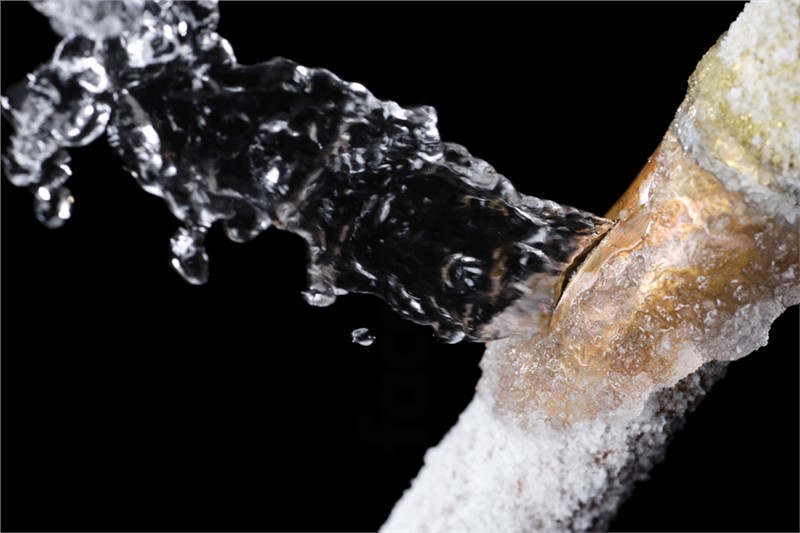Troubleshooting a Frozen AC Pipe - Effective Solutions for Home Cooling Systems
Troubleshooting a Frozen AC Pipe - Effective Solutions for Home Cooling Systems
Blog Article
We have stumbled upon this post involving Have a Frozen AC Line? Here’s How to Fix It directly below on the internet and think it made perfect sense to write about it with you over here.

Introduction
Uncovering that your AC pipeline is frozen can be worrying, specifically during warm summertime when you count on your air conditioning unit one of the most. Comprehending what to do in such a situation is critical to stop further damage to your air conditioning system and ensure your convenience indoors.
Understanding the Causes
A number of elements can add to the cold of an a/c pipeline. Recognizing these reasons can help you resolve the problem properly.
Lack of Airflow
One common reason for a frozen air conditioner pipeline is inadequate airflow. When the airflow over the evaporator coil is restricted, it can trigger the coil to drop below freezing temperature, resulting in ice formation on the pipeline.
Reduced Refrigerant Levels
Not enough cooling agent levels in your air conditioning system can likewise result in an icy pipeline. Low cooling agent levels can trigger the pressure in the system to go down, resulting in the freezing of moisture on the evaporator coil.
Cold Weather Conditions
In cooler climates, freezing temperature levels outside can add to the cold of AC pipes. If your a/c device is not properly shielded or if there are leakages in the ductwork, cold air can infiltrate the system, causing the pipe to ice up.
Dirty Air Filters
Dirty or blocked air filters can restrict air movement in your air conditioner system, leading to numerous problems, including an icy pipeline. It's necessary to change or cleanse your air filterings system frequently to guarantee correct airflow and prevent ice build-up.
Indications of a Frozen Air Conditioner Pipe
Recognizing the signs of a frozen a/c pipe is vital for prompt action.
Minimized Airflow
If you discover a substantial decrease in air movement from your vents, it could suggest a frozen pipeline.
Ice Buildup on the Pipe
Visible ice buildup on the refrigerant line or the evaporator coil is a clear indicator of an icy AC pipeline.
Weird Sounds from the Unit
Unusual noises, such as hissing or bubbling, coming from your air conditioner unit can signal that there's ice present on the pipeline.
Immediate Actions to Take
When confronted with an icy air conditioner pipe, it's necessary to act rapidly to avoid further damages to your air conditioning system.
Shutting off the air conditioning
The first step is to switch off your ac system to prevent the system from running and aggravating the issue.
Checking for Blockages
Inspect the location around the indoor unit for any kind of blockages that may be obstructing air flow, such as furniture or curtains.
Thawing the Pipe
You can make use of gentle approaches like positioning towels soaked in cozy water around the icy pipe to aid thaw it gradually.
Safety nets
Taking safety nets can assist prevent future incidents of a frozen a/c pipeline.
When DIY Methods Fail
If your efforts to thaw the pipeline or address various other concerns are unsuccessful, it's time to contact an expert.
Significance of Hiring a Professional HVAC Technician
A certified HVAC professional has the experience and tools required to identify and repair concerns with your a/c system securely and effectively.
Normal Maintenance Checks
Schedule normal upkeep contact a professional HVAC service technician to ensure that your AC system is running successfully.
Changing Air Filters
Frequently replace or cleanse your air filters to stop airflow restrictions and keep optimal performance.
Protecting Exposed Pipes
If your a/c pipelines are exposed to cold temperatures, consider protecting them to stop cold during winter months.
Looking For Professional Help
If DIY techniques stop working to fix the issue or if you're unclear about how to continue, it's finest to look for support from a certified HVAC service technician.
Final thought
Handling a frozen air conditioning pipe can be a frustrating experience, however recognizing exactly how to respond can aid reduce damages and bring back comfort to your home. By comprehending the reasons, identifying the indications, and taking punctual action, you can properly resolve the issue and stop future events.
Frozen AC Line: Why It Happens & What To Do About It
A frozen AC line can be a rather peculiar sight in a place like Phoenix, Arizona where nothing ever freezes. In this post, we’ll discuss what makes an air conditioner line frozen – and what you can do about it.
Dirty Air Filters
Did you know that you should be cleaning or replacing your air filters on a monthly basis? Failing to do this can result in airflow issues that, in turn, cause your evaporator coils and lines to freeze over. You’ll notice a buildup of ice on both components, although the buildup on your pipes will, of course, be more evident unless you open your air condition up to reveal the coils.
What To Do About It
Give your air filter a good cleaning if it’s reusable. If not, replace the filter outright. Next, switch your air conditioner’s fan setting on and leave it there for 2-3 hours. This will draw warm air in, helping to thaw your evaporator coil. You can also check out this article for some tips on cleaning the coils themselves if you’d like to speed the process up. Before you switch the unit back to its normal state, make sure the supply vents are completely unobstructed and free of dust or other debris.
If you keep having this issue even after replacing your filters regularly, contact a local HVAC repair company and have them inspect your evaporator coil, ductwork, and any other components that may be at fault. If you live in the Phoenix, Arizona area, give American Home Water and Air a call.
Low Refrigerant Levels/Leakage
What To Do About It
Contrary to what air conditioner “recharge” companies often tell their clients about refrigerant, it should never need to be simply refilled. You see, refrigerant runs in what experts refer to as a “closed loop.” Refrigerant really shouldn’t be leaving that loop. If it is, you’ve got a leak.
Paying someone to come and pump more refrigerant into your system (aka “recharge” it) isn’t the solution. Doing that will simply kick the can down the road. Besides, refrigerant leaks can be harmful to the environment and people in your home.
Rather, you need to take care of the leak with the help of a technician. Check out this article for some more information about dealing with air conditioners that are leaking refrigerant. Before you contact a technician, switch your thermostat to the off position. Then, switch the fan setting on and let it run for 2-3 hours so the unit can thaw.
Improper Temperature Setting
Improper temperature settings can also cause a drop in your air conditioner’s pressure. What many people don’t realize is that air conditioners are actually designed to run when temperatures have fallen above roughly 60 degrees Fahrenheit. If you run the unit when it’s cold outside, you’ll run into many issues, including frozen components.

As a fervent reader on Why Is Ice On My Outside Air Conditione, I think sharing that excerpt was really useful. Sharing is good. One never knows, you might be doing someone a favor. Thank-you for your time spent reading it.
Pricing Report this page